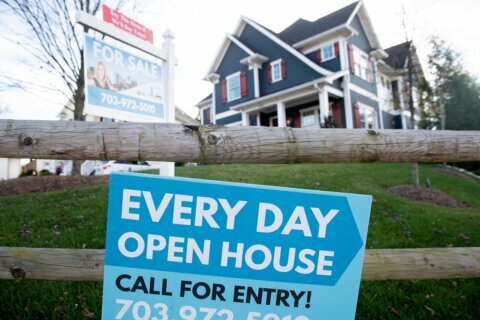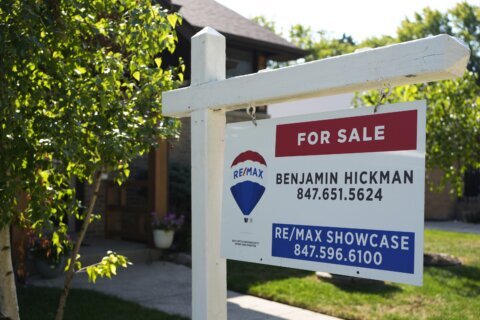English basements. In-law suites. Garage apartments. Whichever type of additional living space may be popular where you live, they all fall under the umbrella of “accessory dwelling unit.” And while these living options have been around in one form or another for many years, they’re gaining popularity for a few reasons.
As defined by the U.S. Department of Housing and Urban Development, an accessory dwelling unit is additional living quarters on a lot with a single-family home that has a separate entrance, bathroom and kitchen. It doesn’t matter if the ADU is attached to the home or a separate structure, which makes basement apartments, carriage houses and tiny homes located on the land all potential ADUs.
Having an ADU on your property can serve a number of functions, from bringing in additional income to living close to family members while maintaining an added level of privacy, explains Martin John Brown, co-editor of AccessoryDwellings.org, an informational website about ADUs.
“It would be nice to have someone close living next to me, but not quite in my same space,” Brown says.
Of course, adding an ADU to your property is a major investment at the start. The cost of building an addition onto a home is, on average, just under $42,000, according to HomeAdvisor. A fully functioning tiny house would likely cost you more — a 266-square-foot tiny home from builder Escape Traveler goes for $66,600.
More recently, cities including Seattle, San Francisco, Atlanta, the District of Columbia and Portland, Oregon, have relaxed zoning laws to allow for the creation of an ADU on residential property without requiring rezoning to a multifamily property.
[Read: 9 Secrets of Successful House Flippers.]
Depending on where you live, how you’d like to utilize your property and your financial situation, the addition of an in-law suite or basement apartment could be a good investment. But first, you’ll want to dive a bit deeper to understand how you can benefit from an ADU.
What Good Can Accessory Dwelling Units Do?
Whether it’s providing a loved one with a home or helping to bring in additional income for you with a renter, ADUs not only offer benefits to the individual who adds it to his or her property, but also to the community and local housing market.
Brown says ADUs rented to the public are more likely to offer greater variation in pricing than the construction of large apartment and condo buildings.
“Because it’s homeowners who create these things and it’s homeowners who decide exactly how they’re used, it’s not always operated with the idea of maximum profit,” Brown says. “Often times they are rented out for less than market rates, so it’s providing housing for the community, and sometimes it’s quite affordable.”
Built as one-off additions to homes, for the most part, accessory dwelling units can benefit any type of community — whether it’s a major city, suburb or even a rural town, Brown says. “However, the places where there’s going to be maybe the strongest movement to make these rules reasonable and allow them is in a place that’s growing and needs extra housing, or perhaps in a place where homeowners need some financial stability,” he adds.
How Can You Add an ADU to Your Home?
The number of cities looking to relax zoning laws to make it easier for homeowners to add a second unit to their property is growing. For example, in 2017 California enacted a requirement that local municipalities amend their zoning laws to make it easier to develop ADUs.
The first thing to do before even entertaining the idea of adding an ADU to your home is to look up the details of your local laws, which you can often find on your city’s or county’s government website, or inquire with city hall where you can find the information. Some cities, such as Chicago and Detroit, don’t allow the construction of new ADUs, while others require a maximum amount of square footage, mandate at least one parking space or restrict the amount of days you can use the unit as a short-term rental on sites such as Airbnb or VRBO.
Rather than building on an existing property, you could buy a new house made for multigenerational housing. Luxury home builder Toll Brothers has always been able to incorporate an in-law suite or other accessory dwelling unit per the client’s request, but the company is now offering more options that include living spaces complete with their own kitchen, bathroom and separate entrance.
[Read: Home Improvements That Hurt the Value of a House.]
“That was something we turned our attention to,” says Kira Sterling, chief marketing officer at Toll Brothers. Whether it’s for the growing diversity of cultures in the U.S. where multigenerational homes are the norm or providing an alternative income option, a new build with an ADU should comply with local zoning requirements and building codes with less red tape on your end.
Renovating or building an addition onto your house to make room for an ADU is still possible — it’s simply a matter of ensuring the right zoning requirements and building codes are followed, then financing the project. Brown says most who construct an ADU either use extra cash they have in the bank or borrow against the equity of their home.
[See: U.S. News Loans Best Home Equity Loans.]
What Stands in Your Way?
Of course, anything that breaks the norm when it comes to how you use your home is going to have at least a few obstacles. Be sure to carefully weigh the cons before you jump into adding an accessory dwelling unit.
Local laws might make building difficult. While more cities are changing their laws to help make ADUs possible, plenty of others make it hard to get approval. You may have to apply for rezoning to add an ADU to your home.
“Usually there are zoning issues relating to that in terms of multifamily zoning for a rental,” Sterling says. The multifamily zoning, which is typically reserved for apartment buildings and condo properties, would likely make it more difficult to sell your house to another individual owner down the line.
The red tape also extends to the construction of any addition to your property. Any major construction will almost certainly require permits and inspection by the city or county. Failing to follow protocol could lead to you having to tear down the fresh construction and do it over again.
They’re still uncommon. While you’ve likely heard of in-law suites and probably know one or two people who rent out a basement or garage apartment to a tenant, ADUs aren’t necessarily the norm yet. As a result, appraisers often struggle to accurately measure the value of a home that has an ADU when it’s appraised for sale.
That’s not to mention, of course, the fact that as an individual homeowner taking on this project, you likely lack the experience of a seasoned real estate developer. “Things that would not stop an experienced developer can easily stop this idealistic homeowner,” Brown says. “They might not know how to argue with the city planning department, for example, whereas a developer would.”
[Read: Protecting Your Property: Scams That Put Homebuyers and Homeowners in Danger.]
Lack of funding. The biggest problem for most homeowners looking to make some additional income with a basement apartment is funding it. Few people have between $40,000 and $60,000 on hand to build an addition or commission a tiny house for the backyard.
Additionally, some cities don’t allow tiny houses on wheels to count as an ADU, and they must instead follow RV and camper laws. In some places, that means you can’t use a tiny house as an ADU unless your property is zoned as a mobile home or RV park.
“It’s going to cost a lot of money, and [homeowners] might not have that money to spend, and borrowing it might be difficult,” Brown says.
The good news is as more cities take a closer look at the benefits of creating additional housing opportunities in less traditional ways, it will likely become easier for homeowners to get the approval, support and funding needed to offer a second living space on their property.
More from U.S. News
6 Things to Consider Before Investing in a Rental Property
What Does That New Luxury Building in Your Neighborhood Mean for Your Home’s Value?
How Much Should You Spend on Big-City Rent?
Why Now May Be the Right Time to Add a New Living Space to Your Home originally appeared on usnews.com







